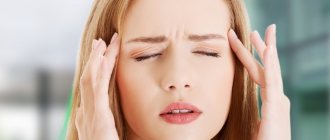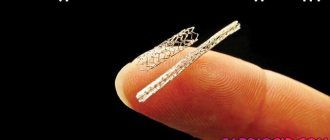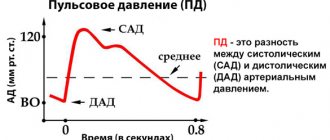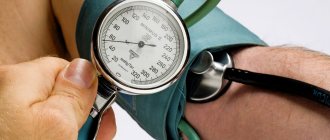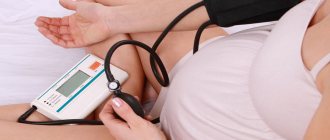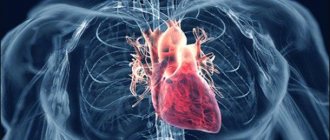Concept and psychological portrait
A hypotensive person is a person with chronically low blood pressure. This happens most often at a young age (from 19 to 40 years), and older people already suffer from senile (atherosclerotic) hypotension. The majority of hypotensive patients are athletes and students. The reasons are different - the result is the same.
Statistics are a stubborn thing; they insist that every fourth inhabitant of the planet faces low blood pressure. Women are much more likely than men (3:1). In Russia, about three million people suffer from hypotension, and every year more than 300,000 die from complications of low blood pressure.
Interestingly, you can be born with hypotension, that is, it can develop in utero. Such a pathology cannot be left to chance. Moreover, blood pressure 70/40 is considered borderline and requires emergency measures.
In athletes, high physical activity causes compensatory addiction to it with adaptive low pressure without symptoms. This is a physiological norm.
In students, hypotension is the result of an unhealthy lifestyle: lack of sleep, malnutrition, constant stress. That is why students are constantly recommended to eat more vitamins, fruits, vegetables, go for walks, get enough sleep, and evenly distribute the study load throughout the academic year, and not transfer it to the session.
Ignoring such recommendations can lead to fainting, fainting, collapse with an unpredictable outcome. If you don’t want to go to the hospital instead of a session, behave wisely! Weed lovers are also susceptible to low blood pressure: marijuana dilates blood vessels, which automatically causes a drop in blood pressure.
Hypotensive people have a complex character. Their behavior correlates with their psychotype and temperament. Hot temper, aggressiveness, nervousness or tearfulness, pessimism, and apathy predominate. There is one common feature - dislike for work. This can be explained simply: lack of strength. Where an ordinary person needs 8 hours of sleep, a hypotensive person needs at least 10. Without enough sleep, he a priori loses his ability to work, and his mood drops. If you deprive him of a cup of morning coffee (caffeine doping), the situation gets worse many times over.
Symptoms
Signs of hypotension are hard to miss. When pressure drops, the patient feels:
- dizziness;
- visual impairment;
- nausea;
- hand tremors;
- lack of air;
- weakness throughout the body;
- unsteadiness of gait.
The main manifestation of hypotension is headache. It can be of different nature and localization. More often it is a pressing paroxysmal pain.
Along with headaches, hypotensive patients notice tremors in the body, cold extremities and increased heart rate. A headache attack may last a few seconds or last for hours.
- presence of lethargy,
- presence of apathy,
- general weakness,
- memory impairment,
- the appearance of absent-mindedness,
- decreased performance,
- shortness of breath with little physical exertion,
- feeling of lack of air, therefore constant yawning;
- possible fainting,
- headache, often associated with changes in atmospheric pressure, heavy food intake, and being on your feet for a long time,
- irritability and emotional instability,
- hypotensive people do not like public transport and queues,
- Hypotonics are very dependent on the season and weather. They do well when it's cold.
- In the morning, hypotensive people do not get enough sleep, they become more active after 2 hours, then their activity decreases, then their activity increases in the evening.
With hypotension, blood pressure decreases, and autonomic disorders also appear - palms and feet sweat, pallor appears, thermoregulation is impaired - in the morning the body temperature is 35.8 - 36°C.
Hypotension is often accompanied by: heaviness in the stomach, bitterness in the mouth, decreased appetite, nausea, belching, heartburn, flatulence, constipation.
Men experience a decrease in potency, and in women the menstrual cycle is disrupted.
People with hypotension feel pain in the joints and muscles that occurs at rest; after taking physical activity, the blood supply to the muscles improves, therefore, the pressure increases and the pain goes away.
When all these symptoms are combined, you become very ill, and the doctor, after conducting an examination, finds no problems with the patient’s health, except for low blood pressure, and diagnoses “vegetative-vascular dystonia of the hypotonic type.”
- women of thirty - forty years old who are engaged in mental work.
- elderly people (atherosclerotic hypotension) - with severe damage to blood vessels by atherosclerosis, the heart muscle becomes flabby, poorly pumping blood.
- athletes, ballerinas - in the presence of constant physical activity, when the body works very economically, the heart beats less often, therefore, the pressure decreases.
- workers - staying underground for a long time, at high humidity and high temperature.
- doctors, pharmacists, procedural nurses - due to occupational allergies.
- any person can suffer from transient physiological hypotension that occurs during adaptation to a new climatic zone, zone - in the highlands, in the Arctic, in the subtropics, tropics.
Why do people become hypotensive?
Medical scientists believe that the basis for the development of chronic low blood pressure is based on four main factors:
- a decrease in cardiac output is a consequence of severe dysfunction of the heart muscle (congenital pathology, heart attack, post-infarction state, myocarditis, cardiac arrhythmia, overdose of adrenergic blockers);
- a decrease in the total volume of circulating biological fluid is caused by internal bleeding, leading to blood loss due to rupture of an aortic aneurysm, spleen, ovarian apoplexy or due to injuries (road accidents, wounds);
- loss of the ability to resist blood pressure in peripheral vessels is formed against the background of anaphylaxis, collapse, severe infections with paralysis of the vascular wall:
- a drop in venous blood flow to the myocardium can be caused by ascites, pleurisy, and various sinusitis, which interfere with normal venous blood flow due to the accumulation of blood in the smallest capillaries.
The reasons that trigger this mechanism of hypotension can be very different.
What not to eat
A person suffering from low blood pressure should not eat foods that lower it even further. The following should be excluded from the diet:
- low-fat dairy products;
- vegetable and olive oil;
- seafood and seaweed;
- legumes;
- oatmeal, buckwheat, lentils;
- bran;
- dried fruits;
- river fish.
The following berries, fruits, vegetables and natural juices from them should not be included in the list:
- apricot;
- orange;
- grapefruit;
- strawberries;
- cranberry;
- cowberry;
- viburnum;
- chokeberry;
- pumpkin;
- turnip;
- tomatoes.
Doctors say that there is no special diet for hypotension. It is recommended to develop your own diet. And the first thing that needs to be adjusted is your diet. Food should be taken at least 4 times a day, eaten in small portions, chewed thoroughly.
At-risk groups
Despite the popular belief that low blood pressure is not dangerous to health, hypotension hides serious risks:
- hypotensive crisis (cerebral or cardiac);
- stroke;
- heart attack;
- thrombosis;
- thrombophlebitis.
At risk for such a development of the situation are employees of offices and industrial enterprises who work against the background of:
- overheating:
- vibrations;
- constant monotonous noise;
- radiation exposure;
- physical inactivity;
- climatic overloads (tropics, polar regions, highlands).
Contribute to the formation of low pressure:
- burns, injuries, blood loss;
- shock of various origins;
- damage to the spine, brain;
- poor nutrition;
- orthostatics (sudden change in body position);
- insomnia;
- bradycardia;
- diseases of the endocrine glands;
- VSD, neurotic states.
Allergies or individual intolerance to certain components of medications, foods, and herbs can lead to a drop in blood pressure.
What foods raise blood pressure?
Low blood pressure is observed much less frequently than high blood pressure, although it causes no less trouble. And the main danger of this condition is that a person can suddenly lose consciousness. Constantly low blood pressure (hypotension or hypotension) is a dangerous diagnosis, which often results in disability. But there are also able-bodied people who experience this condition when:
- weather changes;
- stress;
- colds and other diseases;
- critical days (for women);
- malnutrition.
The first symptoms of low blood pressure are:
- weakness and fatigue;
- increased sweating;
- dizziness;
- nausea and vomiting;
- feeling of squeezing of the temples;
- headache.
Is it possible and worth treating hypotension?
If the pathology does not manifest itself in any way, there are no complaints from the patient, and low blood pressure readings are an accidental finding or a physiological feature of a person, hypotension should not be treated.
The body has found an optimal balance in the functioning of internal organs that does not require correction. Enough tonic drinks in the morning and an active lifestyle.
If hypotension begins to manifest itself clinically, then at first the vascular tone will be easily raised by adaptogens: tinctures of ginseng, lemongrass, eleutherococcus, which should be added to tea a few drops.
In addition, you should pay attention to the possibilities of physiotherapy: hydrotherapy, baths with herbs, natural mineral waters, massage, electrophoresis on the collar area.
Exercise therapy (squats, bicycle, jump rope), a balanced diet, and, if necessary, medications under medical supervision are recommended:
- Citramon, Citramon P, (U, M) - the main components are acetylsalicylic acid, paracetamol, caffeine - analgesic, demonstrates the properties of a psychostimulant, non-steroidal anti-inflammatory drug (NSAID);
- Arteriole – reduces the concentration of blood cholesterol, contains fish oil, Omega-3 acids, a complex of vitamins (A, D, E), iron, manganese, calcium, magnesium;
- Caffeine helps fight fatigue;
- Saparal or aralia root is a central nervous system stimulant, hypertensive, lowers blood sugar, and has general tonic properties;
- Glycine is a nootropic that improves cerebral circulation, stimulates the flow of blood and oxygen to the brain. Read more: what are nootropics and why are they needed.
Among herbs and fruits, St. John's wort, immortelle, hawthorn, rose hips, thistle, leuzea, and Rhodiola rosea are effective.
Effective drugs to increase blood pressure
Complex therapy for arterial hypotension should be aimed not only at combating unpleasant symptoms, but also at eliminating the underlying pathological process.
Classification of drugs for increasing blood pressure:
- Means for stimulating the central nervous system. Drugs in this group stimulate physical and mental activity. Reaction speed improves, attention increases. Fatigue and drowsiness are replaced by cheerfulness and energy. These drugs include: Etimizole, Caffeine-sodium benzoate, Symptol, Securinin, Nicetamide, Effortil, Akrinor, Angiotensinamide, Citramon.
- Plant adaptogens. They have a mild stimulating effect on the central nervous system: extract of Eleutherococcus senticosus, Antler antlers, tincture of Aralia, Zamanikha, Schisandra, Radiola, Ginseng. Saparal in tablets.
- Anticholinergic drugs. The principle of operation is to block the effects of acetylcholine on cholinergic receptors. It should be taken with caution, since drugs in this group can cause delirium: Atropine, Ipratropium bromide, Scopolamine, Pentamin, Pirenzepine, Tubocurarine, Platiphylline.
- Alpha adrenergic agonists. Pressure increases due to stimulation of adrenergic receptors located on the walls of blood vessels, which leads to their narrowing. Drugs with a similar mechanism of action: Midodrine, Mezaton, Mephentermine, Norepinephrine, Fethanol.
Before taking it, be sure to study the contraindications, dosage and methods of use. You should not abuse these drugs - with a systematic decrease in blood pressure, a full examination and consultation with a specialist is necessary.
Well-being all year round: how to cope with the heat easier, which climate is better?
The climate in which they live is recognized as the best for hypotensive people. They do not like changing places, because it is more difficult than others to adapt to new conditions. It's better to relax in your own lane. But hypotensive people have a bad attitude towards summer, they are afraid of the heat and stuffiness, so by hook or by crook they strive to go to the sea. It's easier to breathe there.
In order for your vacation on the seaside to be comfortable, you need to:
- always wear a hat;
- stay on the beach before 10 am and after 4 pm in indirect sunlight;
- during siesta it is better to be in an air-conditioned room;
- wear clothes only from natural, breathable fabrics.
Hypotonic people do not tolerate the off-season well, but feel great on sunny, frosty days with high atmospheric pressure. However, there is also a fly in the ointment: your feet get cold!
Therefore, each hypotensive person chooses his favorite season for himself, as the lesser of two evils. People are united by general tips on how to more comfortably cope with the summer heat:
- never go outside if the sun is at its zenith;
- It is better to sunbathe in the shade, open sun is beneficial for no more than 15 minutes;
- You need to drink water with lemon, it refreshes, invigorates, even better - iced tea with lemon;
- A contrast shower is a real salvation from the heat and bad mood, it tones the arteries.
As you can see, the rules are simple, they help to quickly tone blood vessels and the main thing is to maintain this state throughout the day.
Stabilizing blood pressure at home
Is it possible to quickly raise blood pressure at home? There are several ways:
- Herbal infusions and phototherapy. It is known that some herbal infusions and herbal teas have a positive therapeutic effect for normalizing low blood pressure.
- Acupressure. As well as manual and hydromassage, rubbing the limbs will help improve blood circulation and ensure smooth blood circulation.
- Cold and hot shower. It will invigorate, blood circulation will improve, the result will not be long in coming - the pressure will rise within 15 minutes after the procedure.
- Breathing exercises. Proper breathing techniques teach you to calm down and relax, and help normalize blood pressure.
- Fresh air. A flow of fresh air helps well with dizziness and lack of air during an attack of hypotension.
- A glass of clean, cool water. Refresh, which will improve your well-being if it is hot and stuffy.
- A cup of coffee or tea. The drink should be hot and sweet. You should drink in small sips, slowly.
- Food. There is a certain category of foods that help stabilize blood pressure: berries and fruits, such as lemons, black currants, bananas. Vegetables: carrots, potatoes, onions, garlic. Dairy products: cheese, butter, cottage cheese. Buckwheat, rice and semolina are good cereals. Dried fruits are very useful.
The methods presented above have a short-term effect. You can resort to them if attacks of hypotension are not so frequent. But they will not help to cure a completely pathological decrease in blood pressure - dispensary observation is necessary.
Difficulties getting up in the morning
The real problem for a hypotensive person is waking up in the morning. A simple algorithm of actions that should be brought to automaticity can alleviate the situation:
- without getting out of bed when the alarm rings, lie quietly for a few minutes;
- then, smoothly stretch, take several deep breaths and exhales and a few more while holding your breath;
- blink 50 times;
- Clench and unclench your fists 10 times;
- rub the bridge of your nose until you feel a pleasant warmth;
- alternately tense each muscle group, simultaneously resting your head and heels on the bed;
- pull your knees to your stomach, straighten them sharply, do this several times;
- Now sit down in bed, start writing the entire alphabet with your head (nose), just move alternately: clockwise and counterclockwise.
All together it won’t take more than 5 minutes, but the effect will be noticeable all day.
Useful tips
Here are some more tips for hypotensive patients.
Get your daily routine in order, go to bed at the same time. It is better to take a walk for an hour before going to bed, as fresh air has a good calming effect. It is important to create a favorable psychological climate in the family and at work. Consulting a psychologist will be useful if you cannot cope on your own.
Pay attention to the position of your body. Stand up carefully. Don't sit cross-legged. Before getting up in the morning, breathing exercises can be helpful - take a few deep breaths, then sit slowly before getting up. Sleeping with your head slightly elevated (such as on a high pillow) may also help. Morning exercises can help tone your body and slightly increase your blood pressure.
If you experience symptoms of hypotension while standing, cross and squeeze your thighs or place one leg on a chair and lean forward as far as possible. This will promote the redistribution of blood in the body and increase blood pressure.
You can use rosemary oil once a day. To do this, mix 6 drops of this oil with any other (olive, coconut) and rub it into the body. You can also add a few drops to your bath. Rosemary oil contains camphor, which stimulates the respiratory and cardiovascular systems and will allow your blood pressure to return to normal.
Wearing compression stockings will be helpful. Elastic stockings are widely used to reduce pain and swelling in varicose veins, but they help reduce blood stagnation in the veins of the lower extremities and, thus, slightly increase blood pressure.
Physiotherapeutic procedures are used in the treatment of hypotension: fan shower, contrast shower, circular shower, Charcot shower, cool sea baths. Acupuncture has proven itself well, but the result highly depends on the experience and technique of the doctor.
In most cases, hypotension can be corrected without medication by simply changing your lifestyle, diet and exercise. However, in severe cases, drug therapy is possible. They use sedatives (for example, bellataminal), drugs that increase blood pressure (adrenergic agonists). To treat orthostatic hypotension, doctors may sometimes prescribe medications, for example, fludrocortisone tablets, midodrine.
We will also briefly touch on this pressing question: is it possible to fly an airplane at low pressure? Answer: Yes, you can, but you must consult your doctor before flying. Some time before the flight, it is worth limiting physical activity and walking in the fresh air more often. On the day of your flight, arrive at the airport in advance, immediately after checking in for your flight, go to the waiting room and try to calm down, it is acceptable to take a mild sedative. Drink more during the flight and walk around the cabin every 20-30 minutes.
In conclusion, we will say that you should not despair if you are hypotensive. Hypotension itself is not life threatening. It can create inconvenience and interfere with your work. But it can be corrected: by following the basic tips on diet and lifestyle, which are discussed in this article, you can easily normalize your blood pressure.
However, remember: if you cannot solve this problem on your own, be sure to consult a doctor.
What is better to include in your diet
Arterial hypotension is well corrected by proper nutrition; it should be in fractional, small portions to avoid the specific dynamic effect of food after eating (blood outflow to the digestive organs).
It is not recommended to eat pasta, bread, rice, potatoes. Food should be easily digestible. The drinking regime is calculated by the doctor per kilogram of a person’s weight (at least 1.5-2 l/day). An adult needs 40 ml per kg of weight: this includes all liquid, all drinks, with the exception of alcoholic drinks, which are prohibited - they provoke dehydration). In hot weather the standards increase.
Salt with potassium, magnesium and iodine
For hypotension, it is recommended to consume salt, which retains water in the body and fills the bloodstream. Salt (salted water) can quickly raise blood pressure, which is used when there is a sharp drop in pressure.
For people with low blood pressure, fasting is taboo. You need a lot of foods containing vitamins that normalize blood pressure.
To help hypotensive patients, special tables have been created that will tell you where the largest amount of vitamins is.
| Vitamin name | Products with its maximum |
| Group B – improves the condition of neurons and nerve fibers, normalizes the activity of the central and autonomic nervous system | Dairy products, legumes, liver, rice, yeast, mushrooms, quail eggs |
| Vitamin C – regenerates the vascular wall, increases arterial tone, removes free radicals, rejuvenates the body | Citrus fruits, all sour berries, kiwi, rose hips, spinach, rowan, sea buckthorn |
| Vitamin E is a powerful antioxidant, contains phytoestrogens, normalizes hormonal levels, restores youth | Dried fruits, nuts, seafood, seaweed, olives, vegetable oils, wheat germ |
| Vitamins P – tones blood vessels, improves myocardial function | Citrus fruits, buckwheat, currants, lettuce, spinach, rose hips, cherries, apricots |
Hot chocolate and cocoa are very beneficial in the morning. Breakfast should be hearty.
Don’t forget to include something salty in your menu: fish, caviar, smoked sausage, salt all ready-made dishes.
Fully or partially limited products
Low blood pressure is observed much less frequently than high blood pressure, although it causes no less trouble. And the main danger of this condition is that a person can suddenly lose consciousness. Constantly low blood pressure (hypotension or hypotension) is a dangerous diagnosis, which often results in disability. But there are also able-bodied people who experience this condition when:
- weather changes;
- stress;
- colds and other diseases;
- critical days (for women);
- malnutrition.
The first symptoms of low blood pressure are:
- weakness and fatigue;
- increased sweating;
- dizziness;
- nausea and vomiting;
- feeling of squeezing of the temples;
- headache.
A diet for hypotension should provide the body with the physiological norm of proteins, fats and carbohydrates and should include foods and dishes with a moderately high salt content - various pickles, canned meat and fish, smoked meats, salted fish, fish caviar, raw smoked sausages.
It is recommended to include in the diet dishes richly flavored with herbs/spices (bay leaf, garlic, allspice, cloves, cumin, cinnamon, basil, dill, parsley, as well as various sauces (ketchup, mustard, horseradish), spicy meat, fish and vegetables broths and first courses based on them (kharcho soup, solyanka, borscht).
An important component of the diet are foods containing vitamins and microelements - liver, egg yolk, sprouted wheat grains, yeast, sorrel, spinach, legumes, celery.
A mandatory element of the diet of hypotensive patients should be foods and drinks containing caffeine (cocoa, chocolate, natural coffee, cola, strong green and black tea, energy drinks). As for fruits, it is recommended to include black currants, cherries, lemons, pomegranates and their freshly squeezed juices, and rosehip decoction in your diet.
| Proteins, g | Fats, g | Carbohydrates, g | Calories, kcal | |
Vegetables and greens | ||||
| canned vegetables | 1,5 | 0,2 | 5,5 | 30 |
| zucchini | 0,6 | 0,3 | 4,6 | 24 |
| cauliflower | 2,5 | 0,3 | 5,4 | 30 |
| potato | 2,0 | 0,4 | 18,1 | 80 |
| bulb onions | 1,4 | 0,0 | 10,4 | 41 |
| carrot | 1,3 | 0,1 | 6,9 | 32 |
| beet | 1,5 | 0,1 | 8,8 | 40 |
| pumpkin | 1,3 | 0,3 | 7,7 | 28 |
| horseradish | 3,2 | 0,4 | 10,5 | 56 |
| spinach | 2,9 | 0,3 | 2,0 | 22 |
| sorrel | 1,5 | 0,3 | 2,9 | 19 |
Fruits | ||||
| apricots | 0,9 | 0,1 | 10,8 | 41 |
| watermelon | 0,6 | 0,1 | 5,8 | 25 |
| bananas | 1,5 | 0,2 | 21,8 | 95 |
| melon | 0,6 | 0,3 | 7,4 | 33 |
| nectarine | 0,9 | 0,2 | 11,8 | 48 |
| peaches | 0,9 | 0,1 | 11,3 | 46 |
| apples | 0,4 | 0,4 | 9,8 | 47 |
Berries | ||||
| strawberry | 0,8 | 0,4 | 7,5 | 41 |
| raspberries | 0,8 | 0,5 | 8,3 | 46 |
Mushrooms | ||||
| marinated mushrooms | 2,2 | 0,4 | 0,0 | 20 |
Nuts and dried fruits | ||||
| nuts | 15,0 | 40,0 | 20,0 | 500 |
| raisin | 2,9 | 0,6 | 66,0 | 264 |
| dried apricots | 5,2 | 0,3 | 51,0 | 215 |
| seeds | 22,6 | 49,4 | 4,1 | 567 |
| prunes | 2,3 | 0,7 | 57,5 | 231 |
Cereals and porridges | ||||
| buckwheat (kernel) | 12,6 | 3,3 | 62,1 | 313 |
| semolina | 10,3 | 1,0 | 73,3 | 328 |
| white rice | 6,7 | 0,7 | 78,9 | 344 |
Flour and pasta | ||||
| pasta | 10,4 | 1,1 | 69,7 | 337 |
| noodles | 12,0 | 3,7 | 60,1 | 322 |
Confectionery | ||||
| jam | 0,3 | 0,2 | 63,0 | 263 |
| jelly | 2,7 | 0,0 | 17,9 | 79 |
| marshmallows | 0,8 | 0,0 | 78,5 | 304 |
| pastry cream | 0,2 | 26,0 | 16,5 | 300 |
| paste | 0,5 | 0,0 | 80,8 | 310 |
Ice cream | ||||
| ice cream | 3,7 | 6,9 | 22,1 | 189 |
Chocolate | ||||
| chocolate | 5,4 | 35,3 | 56,5 | 544 |
Raw materials and seasonings | ||||
| mustard | 5,7 | 6,4 | 22,0 | 162 |
| honey | 0,8 | 0,0 | 81,5 | 329 |
| sugar | 0,0 | 0,0 | 99,7 | 398 |
Dairy | ||||
| milk 4.5% | 3,1 | 4,5 | 4,7 | 72 |
| kefir | 3,4 | 2,0 | 4,7 | 51 |
| cream 35% (fat) | 2,5 | 35,0 | 3,0 | 337 |
| sour cream 30% | 2,4 | 30,0 | 3,1 | 294 |
| curdled milk | 2,9 | 2,5 | 4,1 | 53 |
Cheeses and cottage cheese | ||||
| parmesan cheese | 33,0 | 28,0 | 0,0 | 392 |
| cottage cheese | 17,2 | 5,0 | 1,8 | 121 |
Meat products | ||||
| boiled beef | 25,8 | 16,8 | 0,0 | 254 |
| beef liver | 17,4 | 3,1 | 0,0 | 98 |
| boiled veal | 30,7 | 0,9 | 0,0 | 131 |
| rabbit | 21,0 | 8,0 | 0,0 | 156 |
| bacon | 23,0 | 45,0 | 0,0 | 500 |
Sausages | ||||
| smoked sausage | 9,9 | 63,2 | 0,3 | 608 |
Bird | ||||
| boiled chicken | 25,2 | 7,4 | 0,0 | 170 |
| turkey | 19,2 | 0,7 | 0,0 | 84 |
| duck | 16,5 | 61,2 | 0,0 | 346 |
| smoked duck | 19,0 | 28,4 | 0,0 | 337 |
| goose | 16,1 | 33,3 | 0,0 | 364 |
Eggs | ||||
| chicken eggs | 12,7 | 10,9 | 0,7 | 157 |
Fish and seafood | ||||
| smoked fish | 26,8 | 9,9 | 0,0 | 196 |
| black caviar | 28,0 | 9,7 | 0,0 | 203 |
| salmon caviar granular | 32,0 | 15,0 | 0,0 | 263 |
| salmon | 19,8 | 6,3 | 0,0 | 142 |
| salmon | 21,6 | 6,0 | — | 140 |
| trout | 19,2 | 2,1 | — | 97 |
Oils and fats | ||||
| butter | 0,5 | 82,5 | 0,8 | 748 |
| ghee | 0,2 | 99,0 | 0,0 | 892 |
Non-alcoholic drinks | ||||
| mineral water | 0,0 | 0,0 | 0,0 | — |
| cola | 0,0 | 0,0 | 10,4 | 42 |
| black tea with milk and sugar | 0,7 | 0,8 | 8,2 | 43 |
Juices and compotes | ||||
| apricot juice | 0,9 | 0,1 | 9,0 | 38 |
| carrot juice | 1,1 | 0,1 | 6,4 | 28 |
| * data is per 100 g of product | ||||
In the secondary form of arterial hypotension, dietary nutrition corresponds to the indications for the treatment of a particular disease underlying the hypotension. In the primary form of hypotension, there are no prohibitions or restrictions on the inclusion of any foods in the diet.
Hypotonics and sports, is exercise therapy an alternative?
An active lifestyle is recommended for hypotensive patients. Physical inactivity a priori slows down blood flow, automatically causing hypotension. That is, dosed physical activity is practically a panacea for people with low blood pressure.
Sports such as aerobics, swimming, horse riding, cycling, running, jumping are perfect. But power loads are prohibited. Yes, and recommended sports activities should be controlled by your well-being. At the same time, combining sports and exercise therapy is unnecessary.
Therapeutic gymnastics is an alternative to sports activities if there is no time for regular training or it is prohibited by a doctor. The set of exercises is individual, it will be selected by the doctor. But it always includes: “bicycle”, raising straight legs to a right angle in the hip joint, “scissors”, pulling the knees to the chest.
There are special principles of exercise therapy for hypotension:
- consistency, regularity of classes;
- optimal duration (results are never achieved in a couple of days);
- gradual increase in load.
Doctors like to prescribe a path for hypotensive patients - therapeutic walking in areas with elevation changes. The effectiveness is excellent, a lot of fun, uplifting.
However, it should not be confused with mountain climbing; it may be contraindicated in patients with low blood pressure.
Causes of hypotension:
- circulatory disorders,
- presence of heart failure,
- intoxication,
- allergy,
- arrhythmia,
- pancreatitis,
- various infectious diseases,
- neuropsychic tension,
- poor nutrition,
- use of certain medications.
Hypotension complicates the course of many congenital heart defects, acquired heart defects, mitral vessels, myocarditis, respiratory diseases, stomach ulcers, duodenal ulcers, cholecystitis, chronic hepatitis, malignant tumors, leukemia, vitamin deficiency, dystrophy.
Exercise for hypotension:
Exercise for hypotension
Physical exercises help overcome hypotension:
- We approach the wall, stretch our arms forward at chest level, and lower our shoulders down with tension. First, a little, then press hard with your palms on the wall.
- We lie on our backs on the floor, placing our feet against the wall. We press each foot into the wall, while feeling how the muscles of the lower leg and hips tense.
- With low blood pressure, the “bicycle” exercise helps.
While doing exercises, monitor how you feel. Exercise should bring you cheerfulness and pleasure; you shouldn’t do anything through force, but you shouldn’t feel too sorry for yourself. You can’t lie down in bed, you need to move more, this will help fight hypotension.
Many exercises are performed lying down:
- We raise and lower our straight legs, holding them in the raised position for a short time.
- We raise our legs and do the “bicycle” exercise.
- We raise our arms and legs, do the “scissors” exercise, that is, we cross our legs and arms.
- We raise our hands up, lower them down. We do an exercise with weights - we pick up two 0.5 liter plastic bottles filled with water.
- We lie on our backs, sharply box with our hands up and forward.
- Our hands are raised up, and then we suddenly “drop” them.
- We pull our knees towards our stomach, clasping them with our hands. We press our knees forward strongly, trying to “break” our closed hands.
